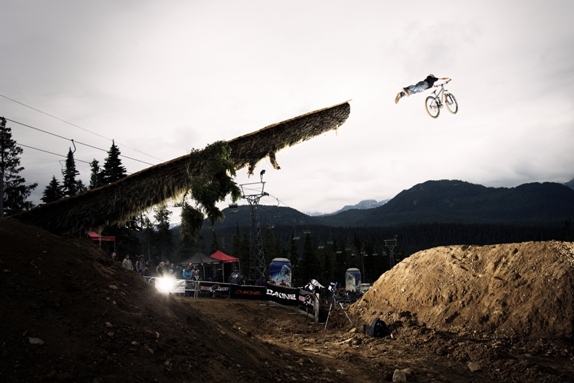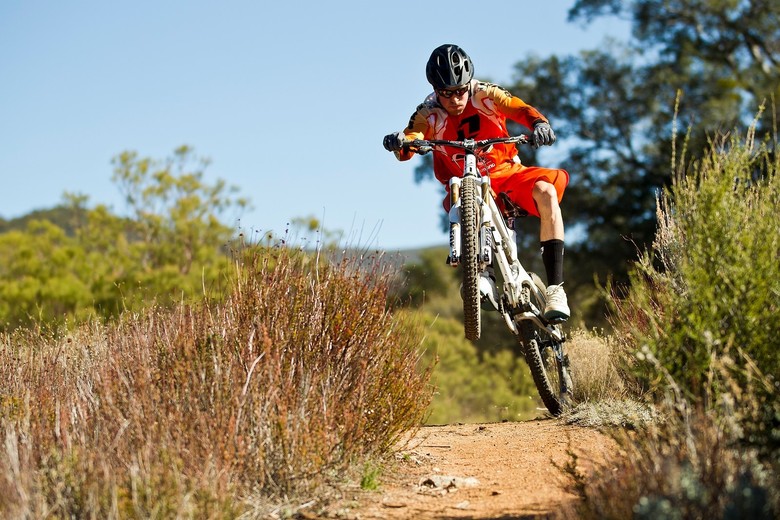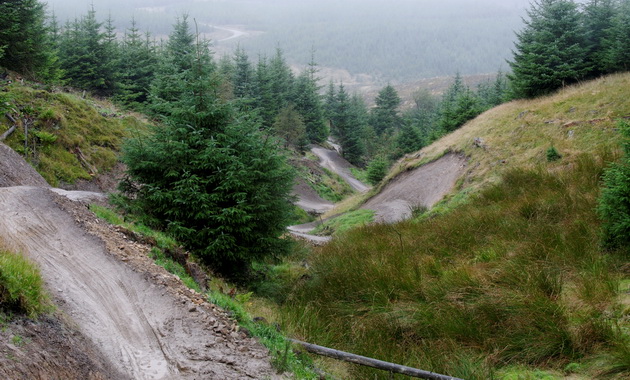Cashroll Barspin
I take nothing away from this achievement, to name a few records, it's the first ever Cashroll Barspin, on any bike, it's the first ever Cashroll combo on a mountain bike and it's the first time ever that a trick has been performed on a mountain bike before a BMX, but it sits as an odd bedfellow to the shambles of the X Games last weekend. How can Szymon recieve so many plaudits for this historical feat and be described as 'pushing the boundaries of slopestyle', when many other top riders could not even ride the course at X Games, the most exposed event in Slopestye's history? Should riders really be learning to do cashroll barspins when they struggle to ride in the wind?
The problem comes from the definition of Slopestyle and/ or Freeride. Freeride itself comes from snowboarding, and encompasses riding without any goals or a set course, in this sense there is no 'real' freeriding in mountain biking. Perhaps the closest the sport comes to this in the FMB tour is the Rampage, where a an entire mountain side is given over for the riders to express themselves. However, there are still man made features and to succeed riders have to correlate their runs to a specific set of judging guidelines. The element of competition totally removes the idea that the riding in any FMB tour event could ever be truly 'free'.
 |
| "Freeride" |
Slopestyle is a definition that better suits the FMB tour, I have taken this from WIkipedia: "Slopestyle" type riding is an increasingly popular genre that combines big-air, stunt-ridden freeride with BMX style tricks. Slopestyle courses are usually constructed at already established mountain bike parks and include jumps, large drops, quarter-pipes, and other wooden obstacles. There are always multiple lines through a course and riders compete for judges' points by choosing lines that highlight their particular skills".
This format has allowed the FMB tour to become the most global of all the elite competitions in the mountain biking spectrum, with events varying geographically from the centre of Vienna to the slopes of Whistler bike park. It also means that events are easy and exciting to watch both live and on screen, they are a great introduction to the sport and I'm sure make plenty of money. However on all these factors I can't help but feel that it will never compete with BMX. Most bronze and silver events on the tour are little more than dirt jump contests, whilst the jumps are larger than in BMX, the larger bikes needed to ride them restrict the variety and technicality of tricks that can be performed and furthermore reduce the danger factor for spectators. Furthermore BMX bikes are far cheaper and generally perceived as cooler than jump bikes, until this is changed BMX will be the sport that kids gravitate to more.
The larger events, Crankworx, the X Games, Rampage and Chatel, I feel show the true potential of Freestyle mountain biking, in these events the jumps and drops are significantly larger, there are many lines to pick from and specifically in chatel and rampage the battle to overcome nature is maintained, keeping the 'mountain' in mountain biking. The only problem is, as I mentioned earlier, a lot of riders now aim their training exclusively at the smaller events to the extent of not being able to even ride some of the gnarlier courses, but still being able to compete for the overall series.
This has created a transatlantic divide over where the fmb tour should pitch itself. The Europeans generally favour the dirt jump courses where as the North Americans excell on the big mountain freeride courses.
So where do you stand on this debate? Should freeride play it safe, appeal to the mass markets and allow accessible events for the public and riders? Or should it be an elite form of competition, where only a truly skilled rider can express themselves over a semi natural course?
Personally I believe that the latter of these two options is the best, downhill does not attempt to change it's natural environment to gain a bigger following and it survives as a sport, furthermore, in these days of social media publicising the sport is no longer a problem. But where do you stand? Should there even be 2 separate series? Let me know in the comments below!








